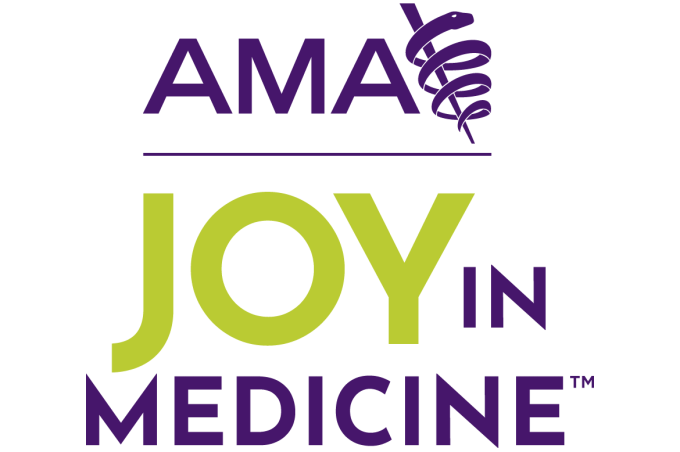“Don’t wait,” is the mantra neurologist Ronald L. Schwartz, MD, lives by when it comes to detecting and treating Alzheimer’s disease. Physicians caring for older-adult patients should have their radar up, listen to patients and take their words seriously.
“If patients are talking about forgetfulness and having some cognitive issues, then that's the time to try to address it,” said Dr. Schwartz, emphasizing that delaying care means delaying people's access to specialists, critical treatments and clinical trials.
As the director and principal investigator at the Hattiesburg Clinic Memory Center in Mississippi, Dr. Schwartz has spent the last few decades researching the biomarkers that may lead to Alzheimer’s disease—decades before any noticeable symptoms show up.
Hattiesburg Clinic is a member of the AMA Health System Program, which provides enterprise solutions to equip leadership, physicians and care teams with resources to help drive the future of medicine.
Diabetes, hypertension, lack of exercise, poor diet and even hearing loss can affect risk. Certain blood-based markers such as the APOE4 carrier gene can also help predict risk.
“It is important to identify modifiable risk factors as early as possible. If we can get ahead of this with lifestyle interventions in middle age, then there is a reasonable goal of decreasing the risk of Alzheimer's disease 10 or 20 years later,” said Dr. Schwartz.
In an interview, Dr. Schwartz discussed the various clinical trials and treatments underway to help address this chronic degenerative disease.
AMA: What inspired you to go into neurology, specifically focusing on Alzheimer's?
Dr. Schwartz: Behavioral neurology is the study of brain-behavior relationships—the study of cognition, function and how neurological disease impacts daily activities. As such, a sub-specialty focus on cognitive neurology allows for insights into elements of the human condition that are most impactful for living a meaningful life.
In clinical practice, specialty centers are uniquely positioned to offer expertise and insight into the consequences of aging and neurodegeneration. As the most common type of dementia, Alzheimer’s is a prominent concern for patients of all ages, but especially those moving into their 70s and 80s.
Now that we have access to disease-specific biomarkers, it is possible to be more precise with an Alzheimer’s diagnosis, as compared to normal aging or other non-AD types of neurodegenerative diseases such as Parkinson’s, Lewy Body or frontotemporal degeneration.
AMA: Why is early detection so important for Alzheimer's treatment and what are symptoms a patient or physician should be on the lookout for?
Dr. Schwartz: The pathology that triggers Alzheimer's starts accumulating in the brain up to 20 years before clinical symptoms are obvious. Initially, amyloid plaques form in the outer layer of the brain. Excess amyloid build-up triggers a neuro-inflammatory response and subsequently a spreading of neurofibrillary tangles. As these misfolded proteins spread, neurons degenerate leading to brain atrophy and symptoms of memory loss or dementia.
We have learned over the past two decades that disease modification is only effective if we can intervene in the earliest stages of AD. All too often, patients present for evaluation when they are past the point of benefitting from the recently approved anti-amyloid immunotherapies. The key to clinical practice in this new era of Alzheimer’s management is to identify the most appropriate patients for treatment, and that means diagnosing as early in the course as possible.
Some of the early signs for patients—and physicians—to look for would be short-term memory loss, trouble with word finding, a nuanced set of personality changes or behavioral problems, sleep issues—things people may associate with normal aging. If symptoms are progressive, or represent a distinct change from an individual’s baseline, that is the time for an assessment. Once we are able to view Alzheimer’s within a window similar to other chronic diseases, we can better recognize the benefits of catching patients in the pre-Alzheimer’s stages in order to slow down or even prevent progression to later stages.
There's a robust pipeline of new things coming up in terms of trying to catch people in the early stages for prevention and treating them as they drift into the early stages of dementia. There's a lot happening in the field to try and get ahead of this.
AMA: What's the typical age that people are usually diagnosed with Alzheimer's?
Dr. Schwartz: There’s a broad range of new patients that come into a memory center. Typically, the older you get, the more likely you are to have symptoms of Alzheimer's. At age 65, it's going to be 8% to 10% of the population, and that will double every five years. By the time you reach age 85, about 50% of patients will be showing signs of AD. While AD is more common as patients get older, it is also important to recognize a similar pattern of cognitive decline in ages 50 to 60s as early onset Alzheimer’s tends to progress more rapidly and can have a devasting impact on families.
AMA: What are you working on at the memory center to help advance Alzheimer's care?
Dr. Schwartz: We've been working on Alzheimer's clinical trials for 15 to 20 years. For example, we have been involved in the pivotal trials for lecanemab (marketed as Leqembi), an immunotherapy infusion which was approved by the FDA in July 2023. Further progress in our field occurred with a second anti-amyloid immunotherapy, donanemab (marketed as Kisunla), getting full FDA approval in July 2024. These are IV infusions designed to clear excess amyloid out of your brain. We’ve learned a lot about the safety profile and how to best manage patients while monitoring for side effects associated with this class of treatment. Being actively involved in clinical trials has allowed us to develop the infrastructure necessary to transition these ground-breaking therapies into clinical practice.
While anti-amyloid immunotherapies represent a revolutionary advance for management of early AD, this is still only the first step towards bending the curve of neurodegeneration. There are clearly other pathologies in the Alzheimer’s brain which need to be addressed. Clinical decline is closely associated with the spread of neurofibrillary tangles suggesting that anti-tau therapies should be next in line for clinical trials. Other complex targets such as neuro-inflammation are also highlighted in a robust pipeline of next generation Alzheimer’s therapeutics.
In terms of early identification, we have started prevention trials in subjects with pre-clinical Alzheimer’s. This means that patients are cognitively normal but show evidence of AD pathology years before they show clinical decline. One early-stage trial is investigating an anti-tau vaccine as an active immunization designed to limit the seeding of tau-related pathology. Another later stage trial (phase 3) is looking at a newly developed anti-amyloid antibody delivered via a subcutaneous route of administration. In the not-too-distant future, hopefully these types of approaches will be able to slow decline enough to ultimately prevent progression to AD.
We are also working on a clinical trial with dual targets where subjects are treated with both an anti-amyloid and an anti-tau immunotherapy simultaneously. This has never been done before and we are thrilled to be able to offer this type of clinical trial for our patient population.
The key to this new era of Alzheimer’s care is the availability of reliable biomarkers. Currently, we utilize amyloid PET scans or spinal fluid (CSF) testing to identify AD-related proteins. These biomarker tests are crucial for informing immunotherapy management guidelines, as well providing diagnostic clarification. Importantly, blood-based biomarkers such as p-TAU 217 may soon be available as a screening tool for early disease.
ApoE genetic testing has become a routine component of a Memory Center diagnostic battery as it allows for identification of disease risk, as well as defining the risk profile for side effects associated with new medications. While still primarily in the research sphere, advanced imaging studies such as tau PET show promise for predicting clinical progression as well as identifying patients who may be eligible for tau-targeting therapeutics. As in other fields such as Oncology, precision medicine is coming to Alzheimer’s care, and our patients will be among the first to benefit from these cutting-edge approaches.
AMA: What inspired you to create the nonprofit disentangleAD and how does it help Alzheimer's patients?
Dr. Schwartz: The inspiration was to try to address a gap in care. There is a tremendous degree of stress involved with caring for an Alzheimer's patient, often associated with an untenable imbalance between work/ family/life-related responsibilities and caregiver duties. The cost of respite care, home modifications (ramps, locks, alarm and video systems), medications can easily become overwhelming for caregivers. Our organization’s mission is to provide a degree of financial support in the form of mini grants in order to help alleviate at least a small fraction of this burden.
We have an annual Caregiver Conference which serves as an educational opportunity for caregivers to come and learn about Alzheimer’s. In addition, the conference provides a forum for caregivers to interact with sponsors and vendors who have products and services for individuals in different stages of Alzheimer's. This is a time when we can get together with the community at large and connect families with local resources who may further help them navigate this emotional journey.
The CME video series, “Navigating Brain Health and Dementia,” is enduring material and designated by the AMA for a maximum of 4 CME credits.
The video series is part of the AMA Ed Hub™, an online learning platform that brings together high-quality CME, maintenance of certification, and educational content from trusted sources, all in one place—with activities relevant to you, automated credit tracking, and reporting for some states and specialty boards.
Learn more about AMA CME accreditation.




